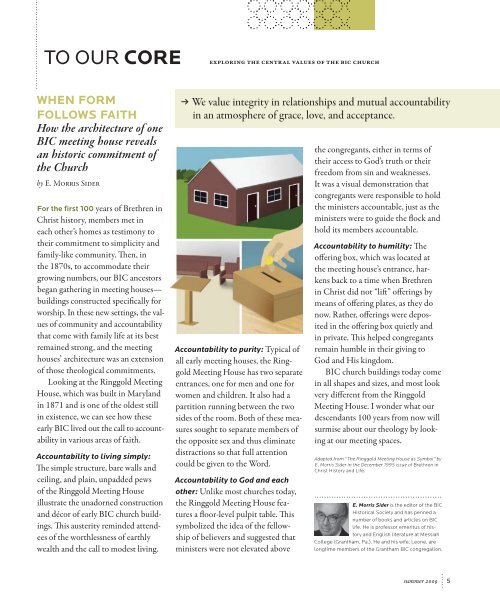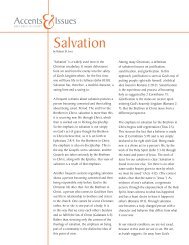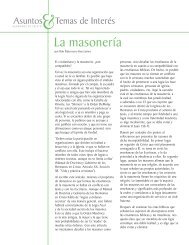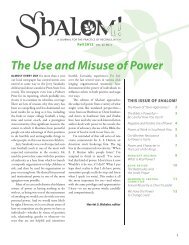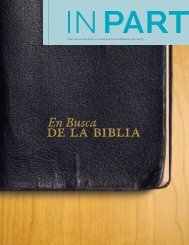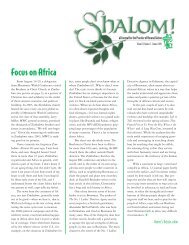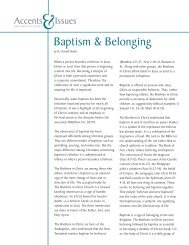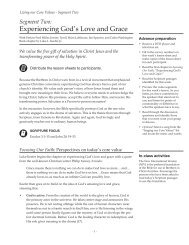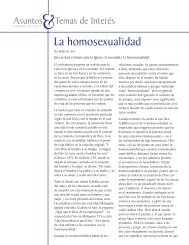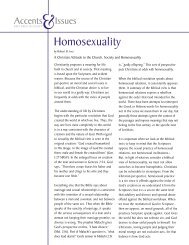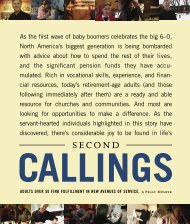Summer 2009 - Brethren in Christ Church
Summer 2009 - Brethren in Christ Church
Summer 2009 - Brethren in Christ Church
Create successful ePaper yourself
Turn your PDF publications into a flip-book with our unique Google optimized e-Paper software.
TO OUR COREexplor<strong>in</strong>g the central values of the bic churchwhen formfollows faithHow the architecture of oneBIC meet<strong>in</strong>g house revealsan historic commitment ofthe <strong>Church</strong>by E. Morris SiderFor the first 100 years of <strong>Brethren</strong> <strong>in</strong><strong>Christ</strong> history, members met <strong>in</strong>each other’s homes as testimony totheir commitment to simplicity andfamily-like community. Then, <strong>in</strong>the 1870s, to accommodate theirgrow<strong>in</strong>g numbers, our BIC ancestorsbegan gather<strong>in</strong>g <strong>in</strong> meet<strong>in</strong>g houses—build<strong>in</strong>gs constructed specifically forworship. In these new sett<strong>in</strong>gs, the valuesof community and accountabilitythat come with family life at its bestrema<strong>in</strong>ed strong, and the meet<strong>in</strong>ghouses’ architecture was an extensionof those theological commitments.Look<strong>in</strong>g at the R<strong>in</strong>ggold Meet<strong>in</strong>gHouse, which was built <strong>in</strong> Maryland<strong>in</strong> 1871 and is one of the oldest still<strong>in</strong> existence, we can see how theseearly BIC lived out the call to accountability<strong>in</strong> various areas of faith.Accountability to liv<strong>in</strong>g simply:The simple structure, bare walls andceil<strong>in</strong>g, and pla<strong>in</strong>, unpadded pewsof the R<strong>in</strong>ggold Meet<strong>in</strong>g Houseillustrate the unadorned constructionand décor of early BIC church build<strong>in</strong>gs.This austerity rem<strong>in</strong>ded attendeesof the worthlessness of earthlywealth and the call to modest liv<strong>in</strong>g.≥ We value <strong>in</strong>tegrity <strong>in</strong> relationships and mutual accountability<strong>in</strong> an atmosphere of grace, love, and acceptance.Accountability to purity: Typical ofall early meet<strong>in</strong>g houses, the R<strong>in</strong>ggoldMeet<strong>in</strong>g House has two separateentrances, one for men and one forwomen and children. It also had apartition runn<strong>in</strong>g between the twosides of the room. Both of these measuressought to separate members ofthe opposite sex and thus elim<strong>in</strong>atedistractions so that full attentioncould be given to the Word.Accountability to God and eachother: Unlike most churches today,the R<strong>in</strong>ggold Meet<strong>in</strong>g House featuresa floor-level pulpit table. Thissymbolized the idea of the fellowshipof believers and suggested thatm<strong>in</strong>isters were not elevated abovethe congregants, either <strong>in</strong> terms oftheir access to God’s truth or theirfreedom from s<strong>in</strong> and weaknesses.It was a visual demonstration thatcongregants were responsible to holdthe m<strong>in</strong>isters accountable, just as them<strong>in</strong>isters were to guide the flock andhold its members accountable.Accountability to humility: Theoffer<strong>in</strong>g box, which was located atthe meet<strong>in</strong>g house’s entrance, harkensback to a time when <strong>Brethren</strong><strong>in</strong> <strong>Christ</strong> did not “lift” offer<strong>in</strong>gs bymeans of offer<strong>in</strong>g plates, as they donow. Rather, offer<strong>in</strong>gs were deposited<strong>in</strong> the offer<strong>in</strong>g box quietly and<strong>in</strong> private. This helped congregantsrema<strong>in</strong> humble <strong>in</strong> their giv<strong>in</strong>g toGod and His k<strong>in</strong>gdom.BIC church build<strong>in</strong>gs today come<strong>in</strong> all shapes and sizes, and most lookvery different from the R<strong>in</strong>ggoldMeet<strong>in</strong>g House. I wonder what ourdescendants 100 years from now willsurmise about our theology by look<strong>in</strong>gat our meet<strong>in</strong>g spaces.Adapted from “The R<strong>in</strong>ggold Meet<strong>in</strong>g House as Symbol” byE. Morris Sider <strong>in</strong> the December 1995 issue of <strong>Brethren</strong> <strong>in</strong><strong>Christ</strong> History and Life.E. Morris Sider is the editor of the BICHistorical Society and has penned anumber of books and articles on BIClife. He is professor emeritus of historyand English literature at MessiahCollege (Grantham, Pa.). He and his wife, Leone, arelongtime members of the Grantham BIC congregation.summer <strong>2009</strong>


